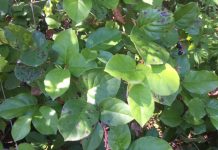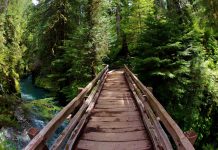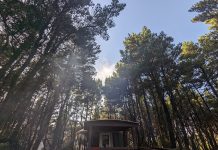For generations, the Quinault Big Cedar on North Shore Road captivated the hearts and imaginations of all who gazed at this wooden giant. Inspiring wonder and joy to countless visitors, this tree was a popular destination in one of America’s most-visited National Parks. Sadly, the mighty cedar met its demise due to natural causes in late July 2016, just two years after the famous Kalaloch Cedar tree fell during a windstorm. Once one of the many jewels of Olympic, the tree now returns to the ground, where it will be the nourishment for future giant trees taking its place.
![]() Fallen giants are nothing new to the Olympic Peninsula. Throughout the rainforests and wilderness of Olympic, the remains of tall trees litter the landscape, giving much needed food to the younger trees struggling to get enough nourishment and sunlight in the rainforest. Using the fallen tree, saplings take root in the downed log, using it as a nurse log to grow strong and tall. The circle of life isn’t limited to animals, and not a single part of the Big Cedar will go to waste. Further generations will return to the region and find another giant standing, having grown from the remains of the once popular Quinault Big Cedar.
Fallen giants are nothing new to the Olympic Peninsula. Throughout the rainforests and wilderness of Olympic, the remains of tall trees litter the landscape, giving much needed food to the younger trees struggling to get enough nourishment and sunlight in the rainforest. Using the fallen tree, saplings take root in the downed log, using it as a nurse log to grow strong and tall. The circle of life isn’t limited to animals, and not a single part of the Big Cedar will go to waste. Further generations will return to the region and find another giant standing, having grown from the remains of the once popular Quinault Big Cedar.
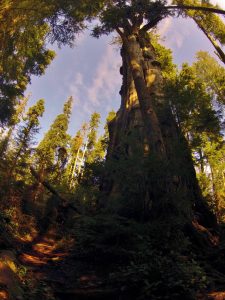
Once standing nearly 174 feet above the fern-covered, muddy forest below, the Quinault Big Cedar finally succumbed to gravity and the elements of the Quinault Rainforest. At 61 feet around, this tree was huge and nearly impossible to capture in a single photograph. Visiting the cedar was highlighted by posing for a picture, climbing inside of it and experiencing the sights, smells and enormity of the forests of the Olympic Peninsula and Olympic National Park. The Quinault Big Cedar was hollowed out and was slowly deteriorating, with signs this towering monster wouldn’t be around much longer. Once it finally fell, many were left wondering what would happen to this popular trail and inspiring destination.
“Olympic National Park, based on safety concerns with the trail and on hearing from disappointed visitors who found no tree, decided to decommission the trail,” Olympic National Park spokeswoman Barb Maynes said. “Instead, we are encouraging people to use the July Creek Area, which has huge trees and great views.”
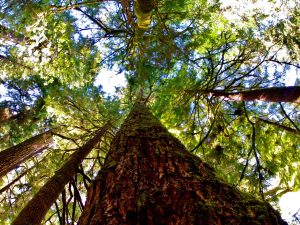
July Creek, just a few miles east of the trailhead to the Big Cedar is a worthy replacement destination. While it lacks the once iconic monolithic tree, it does provide an amazingly well groomed trail that weaves through majestic giants near the shore of Lake Quinault. Unlike the muddy and slippery terrain of the Big Cedar Trail, July Creek’s trails are wide and easy enough for hikers of any age and ability. Complete with a picnic area and access to the lake, which shows off the back of the Lake Quinault Lodge across the lake, there are few areas that rival the beauty and accessibility of July Creek. However, don’t let the fallen Big Cedar Tree keep you from exploring other regions of the park.
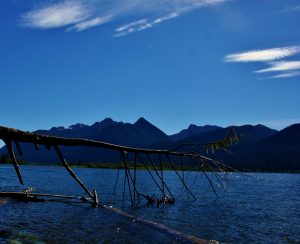
“Our focus isn’t about helping people find one tree (to replace the Big Cedar); instead, we want people to see the amazing forests and huge trees throughout the park,” Maynes continued. “From the rainforest in the west to the other forests around the park, we want people to see the beauty of Olympic National Park.”
In the Lake Quinault Region alone, there are a lifetime of destinations waiting to be explored. From the world’s largest Sitka Spruce Tree on the South Shore, to the magical and inspiring family-friendly hike around the Maple Glade Trail on North Shore Drive, exploring the Lake Quinault Loop is sure to make for the perfect weekend getaway. Even the Quinault Rainforest Nature Trail near the Lake Quinault Lodge will leave your neck strained from looking up to the tops of massive firs, cedars and spruce. While the loss of the Quinault Cedar may be sad to some, we can use this as an excuse to not delay a trip into nature – we don’t know how much longer it may be around.
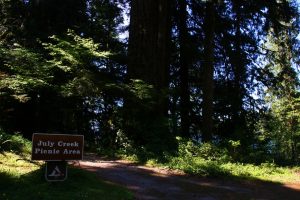
Olympic National Park is always changing and will forever do so. Rocks will tumble down from rugged mountain tops, rivers will shift their banks and trees will fall; this is nature at its wildest and best. All we can do is enjoy what we have now and make sure we take our families and friends out to the natural wonders that inspire us and soothe our souls. The Big Cedar of the Quinault may have fallen, but your adventures in Olympic National Park are just getting started. This weekend, head out and discover someplace new and fall in love with one of the thousands of massive trees that make Olympic National Park a crown jewel in the National Park System.























